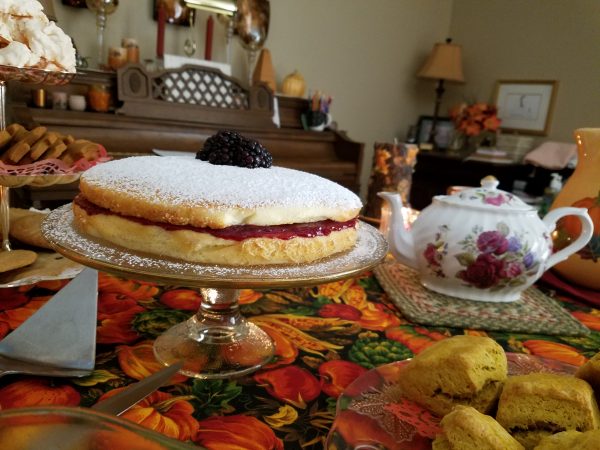Civil War Cookin’: All That Work To Make A Cake
 I plopped the eggs and sugar into the bowl beneath the beater of the stand-up electric mixer, turned the speed to medium, set the timer for twenty minutes, and started measuring the ingredients for the next step. Lazy! My foremothers had to beat the eggs for that same historic recipe by hand. And that’s hard work. We did it. Once. It took four people around one platter, whipping the egg whites with forks for nearly an hour to get stiff egg whites…and stiff arms.
I plopped the eggs and sugar into the bowl beneath the beater of the stand-up electric mixer, turned the speed to medium, set the timer for twenty minutes, and started measuring the ingredients for the next step. Lazy! My foremothers had to beat the eggs for that same historic recipe by hand. And that’s hard work. We did it. Once. It took four people around one platter, whipping the egg whites with forks for nearly an hour to get stiff egg whites…and stiff arms.
Since it’s the day before Thanksgiving and some folks will be in the kitchen preparing yummy for tomorrow’s feasting, let’s talk about the the effort to make cakes and cake recipes in the Civil War era.
Pick up a historic cook book from the 1860’s and you’ll typically find plenty of cake recipes. Those folks had cakes for nearly every occasion. There’s election cake, wedding cake, gingerbread cake, fruit cake, tea cake, layered cake, sponge cake, iced (frosted) cake, etc. etc. etc. Generally speaking, historic recipe cakes were/are much denser than our modern bakery or box-to-table desserts and were also not as sweet. Different flavors depending on the recipe, but some common additions included rose water, lavender, citrus fruit flavorings, nuts, and spices.
This year my newest favorite historical recipe is a sponge cake. Super easy in a modern kitchen, a great historic taste, inexpensive to make, and pretty to serve, this winning recipe comes from a transcription from the Bushong Family of New Market, Virginia. Preserved by Virginia Military Institute’s archives and carefully studied by Stacey R. Nadeau and other researchers, the Bushong’s farm account book contains some family recipes recorded by a granddaughter! The sponge cake is among the original recipes baked by Sarah Bushong in her kitchen and served in her home.

In culinary history, sponge cakes, layered cakes, and jelly cakes seem to be closely related in American baking and eating. A sponge cake can be served plain or two sponge cakes can be “stuck together” with jam as a historic forerunner of the grand layered cakes sometimes mentioned in Civil War era society reports which had multiple layers, jam or some other filling, and icing.
Many housewives had their own sponge cake recipe with unique twists. (Mrs. Robert E. Lee’s cookbook has six recipes for variations for sponge cake from friends and acquaintances!) However, the core recipe is essentially the same, relying on whipped eggs to give the cake a fluffy texture without the volume or stickiness of a modern angel food cake; there isn’t butter or other types of shortening in the batter, basically just eggs, sugar, and flour.
Here’s one example of a sponge cake recipe:
The nicest way to make a sponge cake, or diet-bread, is the weight of six eggs in sugar, the weight of four eggs in flour, a little rose-water. The whites and yolks should be beaten thoroughly and separately. The eggs and sugar should be well beaten together; but after the flour is sprinkled, it should not be stirred a moment longer than is necessary to mix it well; it should be poured into the pan, and got into the oven with all possible expedition. Twenty minutes is about long enough to bake. Not to be put in till some other articles have taken off the first few minutes of furious heat. (Childs, 1833)
Think about the strong women who went to all the effort to make a cake. Farmers’ wives, girls learning to cook, enslaved women, and so many others. Probably your own ancestors made cakes – “the hard way.” Suddenly, the Thanksgiving cooking doesn’t seem so arduous? Most of us don’t even have to chop the firewood or haul the water, much less whip eggs on a platter to make a cake!
Sources:
Childs, The American Frugal Housewife, 1833; reprinted by Applewood Books.
Nadeau, Stacey R. Mother Bushong’s Sponge Cake and other 19th Century Recipes from the Bushong Family and Farm. (2014). Virginia Military Institute.
Zimmer, Anne C. The Robert E. Lee Family Cooking and Housekeeping Book. (1997). University of North Carolina Press.